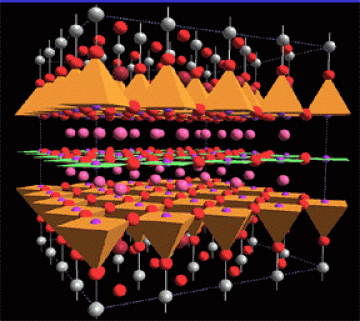The vast domain of physics is a labyrinthine landscape, encompassing various branches that examine the fundamental principles governing the universe. One intriguing query arises when exploring these branches: where does condensed matter physics fit into this schema? To unravel this question, we must first embark on a journey through the myriad facets of physics, delineating key divisions and pinpointing the unique contributions of condensed matter physics.
Physics can primarily be subdivided into classical and modern categories. Classical physics, with its Newtonian mechanics and laws of thermodynamics, lays the groundwork for understanding macroscopic phenomena, providing a robust framework for interpreting everyday experiences. In contrast, modern physics delves into realms previously enveloped in mystery, addressing the nuances of quantum mechanics and the intricacies of relativistic theories. This bifurcation sets the stage for comprehending the fundamental domains that comprise the discipline, of which condensed matter physics is a significant element.
At the heart of this exploration lie the primary branches of physics, including mechanics, thermodynamics, electromagnetism, optics, and quantum mechanics. Each of these fields forges its own path into the cosmic narrative, contributing to our cumulative understanding of matter and energy. Mechanics, for example, scrutinizes the motion of objects under the influence of forces, while thermodynamics orchestrates the dance of heat and work in various systems. Furthermore, electromagnetism governs the interaction of charged particles, an essential aspect of the natural world.
Positioned intriguingly among these branches, condensed matter physics emerges as a distinctive field of study. It is predominantly concerned with the properties of matter in its solid and liquid phases. Within its purview, we find phenomena such as superconductivity, magnetism, and crystallography, where the focus shifts from individual particles to the collective behavior of vast ensembles of atoms. This field, teeming with complexity, provides a fertile ground for interdisciplinary exploration, intersecting with chemistry, materials science, and nanotechnology.
What, then, defines condensed matter physics in relation to its counterparts? The notable characteristic of condensed matter is its emphasis on the macroscopic behaviors that arise from microscopic interactions. By employing statistical mechanics, researchers can glean insights into the emergent properties of materials, deriving fundamental principles from molecular and atomic configurations. This unique synergy illustrates an essential tenet of physics: the behavior of macroscopic systems can often be traced back to the microscopic constituents that comprise them.
As we traverse deeper into the annals of condensed matter physics, we encounter a range of remarkable phenomena. Superconductivity, for instance, represents a state of matter where electrical resistance vanishes at cryogenic temperatures. This occurrence is not merely an experimental oddity; it poses significant implications for technological advancement, potentially revolutionizing electrical transmission systems. Moreover, the exploration of quantum phase transitions provides a captivating glimpse into how subtle changes in environmental conditions can catalyze profound transformations in material properties.
Magnetism, another intriguing realm within condensed matter physics, can be delineated into several categories, including ferromagnetism, antiferromagnetism, and paramagnetism. These classifications arise from the intricate interplay of atomic spins and their alignment within material structures. Investigating these interactions allows scientists to develop novel materials for data storage, quantum computing, and magnetic resonance imaging, among other applications. Here, condensed matter physics not only enriches our theoretical knowledge but simultaneously drives technological innovation.
Furthermore, the enigmatic world of topological phases of matter has emerged as a frontier brimming with potential. Topological insulators, for instance, exhibit insulating behavior in their bulk while allowing for conducting states at their surfaces, driven by underlying symmetries. The exploration of such materials holds promises for advancing quantum computing and understanding fundamental symmetries within the universe. It further underscores the breadth of inquiry that condensed matter physics facilitates, transcending conventional boundaries and reshaping our understanding of matter.
Intriguingly, the study of condensed matter physics raises philosophical questions and challenges. For instance, as one contemplates the emergence of complexity from simplicity, one might ponder: how do intricately ordered structures arise from fundamental particles governed by quantum mechanics? This query invites interdisciplinary dialogue, where physicists, chemists, and philosophers alike may converge, analyzing the implications of complexity theory and emergent behavior across scientific domains.
To synthesize our aims in understanding the hierarchies of physics, condensed matter physics occupies a distinctive and crucial position. Its intricate web of interactions provides a deeper comprehension of both fundamental particles and complex systems. As we continue to unravel the enigmas of the universe, condensed matter physics not only contributes to theoretical frameworks but also influences pragmatic undertakings in material science and advanced technologies.
In conclusion, the rich tapestry of physics unfolds in a myriad of branches, each revealing unique insights into the nature of reality. Condensed matter physics stands as a pillar within this framework, bridging gaps between the microscopic and macroscopic realms. Its studies beckon us to ponder foundational dilemmas and chase the possibilities that remain tantalizingly out of reach. As we venture forth into the uncharted territories of this dynamic discipline, we may well discover new paradigms that challenge our understanding and redefine our place within the cosmos.








